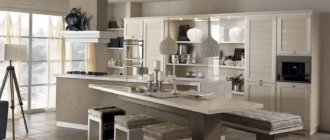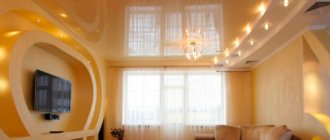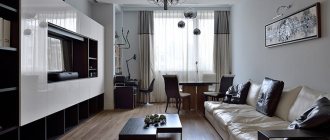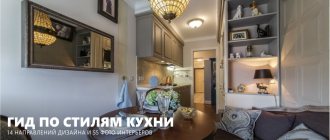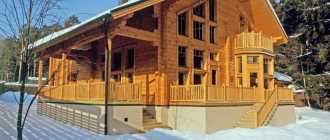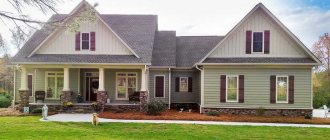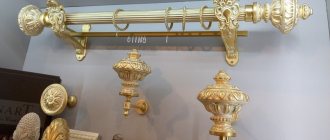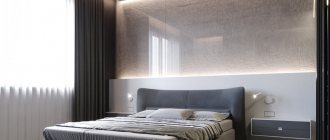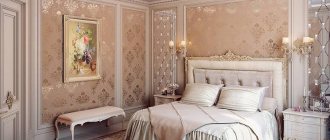Pin
Tweet
Share
Share
0 shared
Classicism (French classicisme, from Latin classicus - exemplary) is an artistic style and aesthetic direction in European art of the 17th-19th centuries. Classicism is based on the ideas of rationalism, which were formed simultaneously with those in the philosophy of Descartes. A work of art, from the point of view of classicism, should be built on the basis of strict canons, thereby revealing the harmony and logic of the universe itself.
Facades of Houses in Classic Style
Of interest to classicism is only the eternal, the unchangeable - in each phenomenon it strives to recognize only essential, typological features, discarding random individual characteristics. The aesthetics of classicism attaches great importance to the social and educational function of art. Classicism takes many architectural rules and canons from ancient art.
Classic House Facades
The main feature of the architecture of classicism was the appeal to the forms of ancient architecture as a standard of harmony, simplicity, rigor, logical clarity and monumentality. The architecture of classicism as a whole is characterized by regularity of layout and clarity of volumetric form. The basis of the architectural language of classicism was the order, in proportions and forms close to antiquity. Classicism is characterized by symmetrical axial compositions, restraint of decorative decoration, and a regular system of city planning.
Canons of the classical style
Based on the rules of antiquity, the classical style in architecture is very recognizable. It is characterized by the following features:
- majestic monumentality;
- clarity of spatial solutions;
- strictness of forms;
- laconic finishing;
- use of an order system;
- light, discreet colors in the design.
Classic elements
Classical architecture, like any other, has its own characteristics. In this case, the following stand out:
- Order design. That is, for any building made in this style, the presence of columns and an entablature (horizontal part) is required. As a rule, they mark the main entrance, less often they decorate a balcony or terrace.
- Symmetry. This is a mandatory element of style, inextricably linked with the previous one. All buildings must be symmetrical not only relative to the central axis, but also within each fragment.
- "Golden Ratio". It assumes an ideal ratio of the width and height of the building, setting harmonious proportions.
- Regularity of planning. Provides for the presence of identical elements located at a certain distance from each other.
- Reproduction in different parts of the building of the same geometric figure, but of unequal sizes.
- Availability of several floors.
- Greek portico.
- The use of statues, marble stairs, bas-reliefs on the pediment.
- Restrained decor, no frills.
House Design in Classic Style
The architectural language of classicism was formulated at the end of the Renaissance by the great Venetian master Palladio and his follower Scamozzi. The Venetians absolutized the principles of ancient temple architecture to such an extent that they even applied them in the construction of private mansions. In England, Palladianism took root, and local architects, with varying degrees of fidelity, followed Palladio’s precepts until the middle of the 18th century.
By that time, satiety with the “whipped cream” of the late Baroque and Rococo began to accumulate among the intellectuals of continental Europe. Born of the Roman architects Bernini and Borromini, Baroque thinned out into Rococo, a predominantly chamber style with an emphasis on interior decoration and decorative arts. This aesthetics was of little use for solving large urban planning problems.
Building a house, what to choose?
Before developing a project for a private house, you need to select the most comfortable place to build a house, select materials and the architectural style of the future building. In most cases, owners of suburban areas, when starting planning the construction of their home, have in mind some kind of model that they want to update with new solutions. And this is correct, because the style of the building and, above all, the appearance of the facade is the image of the future housing and its owners.
The appearance of a private house can tell a lot about its owners, for example, about the taste or status of the residents. And if technological elements, architectural forms and materials are correctly selected, then such a one-story or two-story house will last for many years, delighting guests and owners. The next important aspect is the interior decoration of the house, since it must correspond to the overall architectural and structural design and match the style of the building’s facade.
Each style has its own history and is based on the experience of past generations. At the same time, each new house is a product of its time, using modern design, environmentally friendly building materials and new design solutions. It is quite difficult for many people to understand the variety of styles, be it classic, avant-garde, modern or a host of other options, but when building a house, the main role is played by the correct selection of a style that will appeal to all family members.
Almost all country real estate is represented by beautiful one-story or two-story cottages, where several styles of architecture are mixed, and a maximum of natural materials for construction are selected. This is explained by the fact that every home owner tries to create something unique, something that others do not have. Sometimes such a choice is not justified and the effect of unnecessary clutter is created, so the best option is to choose a building in the same style. The greatest demand in country architecture today is the classic style.
Country House Design in Classic Style
Already under Louis XV (1715-74), urban planning ensembles were built in Paris in the “ancient Roman” style, such as Place de la Concorde (architect Jacques-Ange Gabriel) and the Church of Saint-Sulpice, and under Louis XVI (1774-92) a similar “noble Laconism" is already becoming the main architectural direction.
The most significant interiors in the classicist style were designed by the Scot Robert Adam, who returned to his homeland from Rome in 1758. On his return to his homeland he was made royal architect in 1762, but resigned this position in 1768 because he was elected to Parliament and took up architecture and building with his brother James. He was greatly impressed by the archaeological research of Italian scientists.
Interior, photo
If the outside of the house is built in a classical style, then the inside should adhere to this trend. There are rules for interiors too. Professional craftsmen will suggest suitable design options.
It is strictly forbidden to use cheap paper wallpaper. For the living room walls, choose heavy wallpaper with floral patterns or use textiles (silk, satin, viscose).
Lighting
An integral part of classicism is a large chandelier with imitation candles and crystal hanging elements. Even if there are no more decorative details in the room, this will be enough.
Other options will also work. Metal frame in bronze or gilding, while lampshades can be made of textiles or ceramics. If the room is large, then one, even very large, chandelier will not be enough. Then they select floor lamps, or, a more modern option, spotlights.
Furniture
Often in classic-style interiors, antique-style furniture is used. Mandatory features are:
- Curved lines.
- Carved details.
- The presence of natural wood, not OSB or chipboard.
- High-quality upholstery made of leather or paid textiles.
Modern household appliances do not fit into the luxury style at all. That’s why it is hidden in niches, behind carved doors, or framed with carved inserts, creating the semblance of a painting. As for color solutions, a light, warm palette with the addition of gilding is fully used here. But there should not be too many such details.
Textile
This detail is also important in a classic interior. For window decoration, choose high-quality natural fabrics with small prints. It should not be intrusive and bright. The shade and pattern should completely match the style of the room. The same applies to furniture upholstery.
Large and small decorations
Any interior is completed with decorative elements. These can be both large options and very small trinkets. It is important to choose everything correctly so as not to make the design too rough or tasteless:
- A light fountain made of granite or marble will make the room even fresher, cleaner and brighter. Choose if there is enough space.
- A fireplace will be appropriate both in the bedroom and in the living room. It is not at all necessary that it be decorative. You can create a functional decorative element that will also provide warmth in the winter.
- Small decorative elements are bought in pairs and placed on mantelpieces or cabinets. These can be candlesticks, figurines, photo frames, watches and other things.
For a classic-style interior, stucco, plaster or imitation are also suitable. It decorates not only the ceiling, but also door and window openings, and even walls. Such decorative elements are made with floral motifs or clear lines.
Classic Building Facade
In Adam’s interpretation, classicism was a style hardly inferior to rococo in the sophistication of its interiors, which gained it popularity not only among democratically minded circles of society, but also among the aristocracy. Like his French colleagues, Adam preached a complete rejection of details devoid of constructive function. This returned the severity of lines and precise proportions to the architectural stucco decoration (and architectural elements in general).
Features of a classic home interior
This style of interior design will be appreciated by serious people. It is also customary to use classic elements here: columns, statues, unique paintings, crystal. Solid wooden furniture and expensive fabrics will successfully complement the decor.
Materials
Modern arrangement allows the use of budget substitutes. However, true classics do not accept artificial materials that only from a distance resemble marble or wood. In this case, the entire composition will be disrupted.
For lovers of luxury and those who have the means, it is better to give preference to natural materials. Not only are they more environmentally friendly, but they also last much longer.
Color palette
She should be calm and discreet. The entire interior is done in pastel shades with the addition of dark noble accents (wood, stone, granite). Gilding may be present.
Furniture
If we talk about the classic style of the last century, then the furniture should be luxurious, decorated with patterns and monograms. Tables, chairs and sofas, made of expensive materials, should resemble the decoration of palaces of past centuries. They can be made of wood and decorated with satin, silk or velvet.
Decor and textiles
The choice of materials must be approached very carefully. You need to purchase only natural fabrics. Ideally suited to the interior: chintz, cotton, linen, satin, silk and velvet.
Classic House Facade
The Frenchman Jacques-Germain Soufflot, during the construction of the Church of Sainte-Geneviève in Paris, demonstrated the ability of classicism to organize vast urban spaces. The massive grandeur of his designs foreshadowed the megalomania of the Napoleonic Empire style and late classicism. In Russia, Vasily Ivanovich Bazhenov moved in the same direction as Soufflot. The French Claude-Nicolas Ledoux and Etienne-Louis Boullé went even further towards developing a radical visionary style with an emphasis on abstract geometrization of forms. In revolutionary France, the ascetic civic pathos of their projects was of little demand; Ledoux's innovation was fully appreciated only by the modernists of the 20th century.
Projects of Classic Houses with Columns
The architects of Napoleonic France drew inspiration from the majestic images of military glory left behind by imperial Rome, such as the triumphal arch of Septimius Severus and Trajan's Column. By order of Napoleon, these images were transferred to Paris in the form of the triumphal arch of Carrousel and the Vendôme Column. In relation to monuments of military greatness from the era of the Napoleonic wars, the term “imperial style” is used - Empire style. In Russia, Carl Rossi, Andrei Voronikhin and Andreyan Zakharov proved themselves to be outstanding masters of the Empire style. In Britain, the empire style corresponds to the so-called. “Regency style” (the largest representative is John Nash).
House Design in Classic Style in Photo
Cities such as St. Petersburg, Helsinki, Warsaw, Dublin, Edinburgh and a number of others have turned into genuine open-air museums of classicism. A single architectural language, dating back to Palladio, dominated throughout the entire space from Minusinsk to Philadelphia. Ordinary development was carried out in accordance with albums of standard projects.
Floral monotony in the design of a bedroom in a country house
Design of a guest bedroom in a country house. Photo 2016
The next project attracts attention with the exquisite uniformity and neutrality of the color palette. Despite the floral patterns of the wallpaper, the room looks monochromatic and homely. There is a sense of interior here.
Beautiful Houses in Classic Style
Predominant colors: rich colors; green, pink, purple with gold accent, sky blue.
- Lines: strict repeating vertical and horizontal lines; bas-relief in a round medallion; smooth generalized drawing; symmetry.
- Shape: clarity and geometric shape; statues on the roof, rotunda; for the Empire style - expressive, pompous, monumental forms.
Facade of a House in Classic Style
Interior elements: discreet decor; round and ribbed columns, pilasters, statues, antique ornaments, coffered vault.
- Structures: massive, stable, monumental, rectangular, arched.
- Windows: rectangular, elongated upward, with a modest design.
- Doors: rectangular, paneled; with a massive gable portal on round and ribbed columns; with lions, sphinxes and statues.
Pin
Tweet
Share
Share
0 shared
Classics in architecture
Classicism replaced the decor-obsessed Rococo and introduced monumentality and severity of forms into architectural structures. The basis of this style was the ancient order, with its brevity and symmetry, columns, pilasters, ornaments and statues. Exterior decor serves to display the purpose of buildings:
- municipal buildings (courts, libraries) are decorated with statues-symbols of the area of activity;
- country houses in the baroque and classicism styles emphasize the status and occupation of the owners with decor: sculptures, paintings and other elements.
The characteristic features of classicism are:
- axial symmetry of the building;
- geometricism;
- discreet decor: columns, pilasters, attics, friezes, etc.;
- rectangular or arched openings;
- regular planning;
- light or contrasting colors.
Classicism is universal and can be used in estate architecture and for designing beautiful mansions. Buildings in this architectural style look natural outside the city and in urban landscapes with low-rise buildings. Such houses always become the center of an architectural ensemble. It is worth taking a look at the design project of a 19th century mansion in a classical style.
